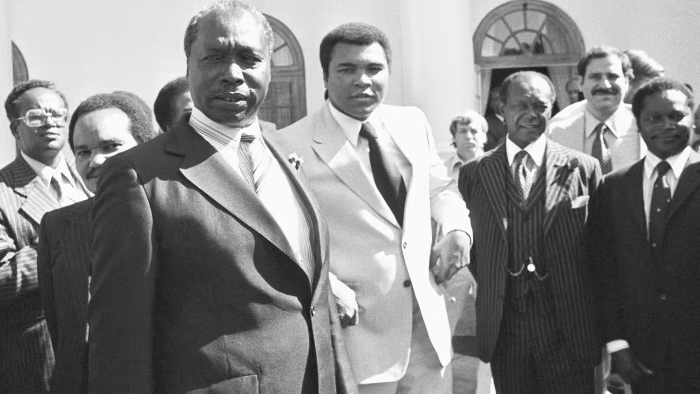
On August 1, 1982, Kenya experienced a significant upheaval known as the “Hezekiah Coup,” an attempted overthrow of President Daniel arap Moi’s government. This event, though short-lived, left an indelible mark on the nation’s political landscape.
Backdrop to the Coup

In the early 1980s, Kenya was under the leadership of President Daniel arap Moi, who had ascended to power in 1978 following the death of the nation’s first president, Jomo Kenyatta. Moi’s administration faced growing dissatisfaction due to perceived centralization of power and suppression of dissent. This discontent simmered within various sectors, including the military.
The Architect: Hezekiah Ochuka

At the heart of the coup was Senior Private Hezekiah Rabala Ochuka, a member of the Kenya Air Force. Born on July 23, 1953, in Nyakach, Kisumu District, Ochuka had risen to the rank of Senior Private Grade-I, the second-lowest in the military hierarchy. Despite his junior position, Ochuka harbored grand ambitions, reportedly inscribing “The next president of Kenya” on his desk.
Execution of the Coup

The coup commenced in the early hours of August 1, 1982. By 3 a.m., rebels had seized Eastleigh Air Base near Nairobi, and by 4 a.m., Embakasi Air Base was under their control. At 6 a.m., Ochuka and Sergeant Pancras Oteyo Okumu took over the Voice of Kenya radio station, announcing in both English and Swahili that the military had assumed control and that a “People’s Redemption Council” was now governing.
The plotters had anticipated minimal resistance, believing that key military leaders were away participating in exercises in Lodwar. However, their plans quickly unraveled. The rebels failed to capture or neutralize senior government officials and did not secure the army headquarters. Additionally, lacking support from the broader military, they were without the necessary heavy weaponry to maintain their positions.
Suppression and Aftermath

The government’s response was swift and decisive. Major General Mahamoud Mohamed, acting Deputy Chief of the General Staff, assembled a contingent from the First Kenya Rifles Battalion and Kahawa Barracks. This force successfully retook the broadcasting station, a pivotal move in quelling the coup. With assistance from the General Service Unit (GSU) and regular police forces, loyalist troops regained control of Nairobi, forcing the rebels to flee.
The coup attempt resulted in significant casualties, with reports indicating that at least 129 people were killed. Ochuka fled to Tanzania but was later extradited back to Kenya. He, along with other coup leaders, was tried and convicted of treason. In 1987, Ochuka and several accomplices were executed by hanging, marking the last use of the death penalty in Kenya to date.
Political Ramifications

The failed coup had profound implications for Kenya’s political trajectory. President Moi’s administration intensified efforts to consolidate power, leading to increased repression of opposition voices and curtailment of political freedoms. The Kenya Air Force was disbanded and later reconstituted under tighter government control. The coup also served as a catalyst for the snap general elections in 1983, as the government sought to reaffirm its legitimacy.
Legacy and Reflection
Decades later, the 1982 coup attempt remains a pivotal chapter in Kenya’s history. It underscores the lengths to which individuals and groups may go when driven by political dissatisfaction and ambition. The event also serves as a reminder of the importance of addressing grievances within established legal and democratic frameworks to prevent the recurrence of such drastic actions.
In reflecting on the “Hezekiah Coup,” it becomes evident that while the attempt was swiftly suppressed, its impact resonated through the years, influencing governance, civil-military relations, and the broader discourse on democracy in Kenya.



